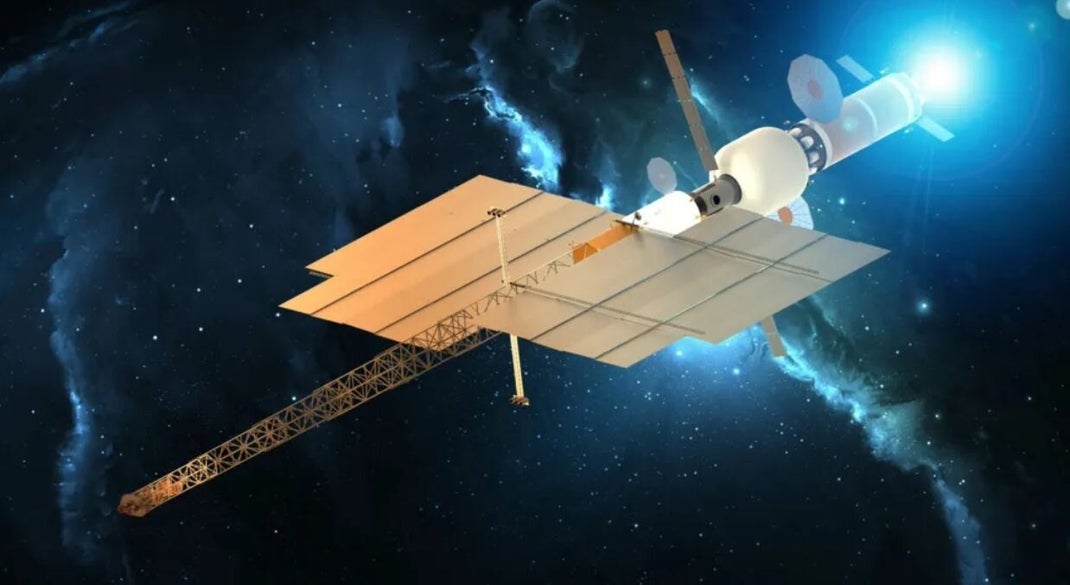A spacecraft typically takes between seven and nine months to travel to Mars. The duration depends on the spacecraft’s design and the varying distance between Earth and Mars as they orbit the Sun. NASA’s Perseverance rover, the most recent mission, completed its journey in approximately seven months.

Reducing travel time to Mars would significantly accelerate the possibility of a human mission. NASA is exploring nuclear electric propulsion as a potential solution to shorten the trip.
Unlike robotic missions such as Perseverance, sending a crewed mission to Mars presents significant challenges. While robotic explorers can remain on the planet indefinitely, humans need a return plan. One of the primary constraints is the availability of launch windows, which occur every 26 months when Mars and Earth are optimally aligned. As a result, a crewed round-trip mission could take around four years, depending on the duration of the stay on Mars.
Advancements in propulsion technology may enable a round-trip to Mars in just two years. Engineers at NASA’s Langley Research Center are developing a nuclear electric propulsion system that could make this feasible. This system uses a nuclear reactor to generate electricity, which then ionizes gaseous propellants to produce thrust.
However, there is a significant challenge: the system must be assembled in space.
Named the Modular Assembled Radiators for Nuclear Electric Propulsion Vehicles (MARVL), this technology aligns with NASA’s goal of developing a Mars Transit Vehicle, also known as Deep Space Transport, within the next ten to twenty years.
A critical component of MARVL is its heat dissipation system, which, when deployed, spans an area comparable to a football field. To manage its size, engineers plan to break it into modular components that can be assembled robotically in space.
“By doing that, we eliminate the need to fit the whole system into a single rocket fairing,” explained Amanda Stark, a heat transfer engineer at NASA Langley and the principal investigator for MARVL. “This allows us to optimize the design more effectively.”
Unlike previous space missions where spacecraft were compacted to fit within rocket nosecones and later deployed, MARVL’s heat dissipation system is too large for conventional methods. Even complex deployments like the James Webb Space Telescope’s 6.5-meter-wide mirror were challenging. MARVL’s system is significantly larger and requires a different approach.
By making the heat dissipation system modular and assembling it in space, engineers gain flexibility in how and when its components are launched. These pieces can be sent into space in any order and assembled as needed.
Advances in space robotics will play a crucial role in assembling MARVL. NASA’s Langley Research Center, a facility spanning over 700 acres and employing thousands of experts, has been at the forefront of solving such engineering challenges for decades. It has contributed to projects like the Apollo Lunar Module, the Hubble Space Telescope, and the Viking Mars Lander.
This initiative represents a shift in spacecraft design—building vehicles from modular components intended for in-space assembly rather than pre-assembled launches.
“Existing vehicles were not designed with in-space assembly in mind. This is an opportunity to ask, ‘How do we design a vehicle specifically for space assembly?’” said Julia Cline, a project mentor in the Research Directorate at NASA Langley. Cline previously led Langley’s participation in the Nuclear Electric Propulsion technology maturation plan, a precursor to MARVL.
NASA considered multiple propulsion technologies before selecting NEP. One alternative was Nuclear Thermal Propulsion (NTP). They also explored a “quad-wing” design for NEP, which could fit within the Space Launch System’s payload fairing. However, that approach required a larger surface area, complex deployment mechanisms, and additional propellant.
The Bi-Wing design ultimately proved more advantageous. It allows modular launches using commercial rockets without relying on the SLS. Additionally, it avoids restrictions imposed by rocket payload fairings and reduces exposure to solar flux, which could hinder cooling.
NASA has given the MARVL project team two years to develop the concept. By then, they aim to demonstrate a small-scale ground prototype.
“One of our mentors said, ‘This is why I wanted to work at NASA—projects like this,’” said Stark. “I feel the same way, and I’m thrilled to be part of it.”
Reference:
Getting To Mars Quickly With Nuclear Electric Propulsion – Universe Today

